- ADD:Hongzhuang Road, East Town Industry Area, Yaoguan Town, Wujin District, Changzhou City, Jiangsu Province, PR. China

- Mobile Phone:+86-15961181358
- Fax:+86-519-88700526
- E-mail:wk1358@dongchuan.cn
How many types of conveyor chains are there?
Have already visited 17302/28/2025
With the applications becoming more complex, the types of industrial conveyor chains have also been continuously enriched, as an essential part of automation production. How many types of conveyor chains are there? Such questions should be answered through rigorous categorization based on materials, structures, functions, etc. Through a comprehensive analysis, this article will help the users to find its match accurately.
Classification by Material and Resistance: Coping with Diverse Environmental Challenges
Stainless Steel Conveyor Chain
Made of 304 or 316L stainless steel, it has the characteristics of corrosion resistance, high temperature resistance (up to 400°C), and easy cleaning, making it suitable for industries with strict hygiene standards such as food processing and pharmaceuticals. Some models are polished to further reduce surface friction and prevent material residue.
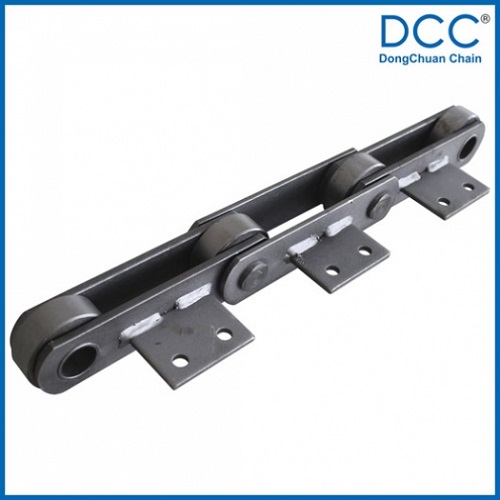
Manufactured from alloy steel or quenched carbon steel, its tensile strength and wear resistance are enhanced through heat treatment processes, and it can bear loads of tens of tons. For example, the 4824 Heavy Duty Crank Chain is designed specifically for high-impact scenarios in mines and metallurgy, and the integrated welding process enhances its structural stability.
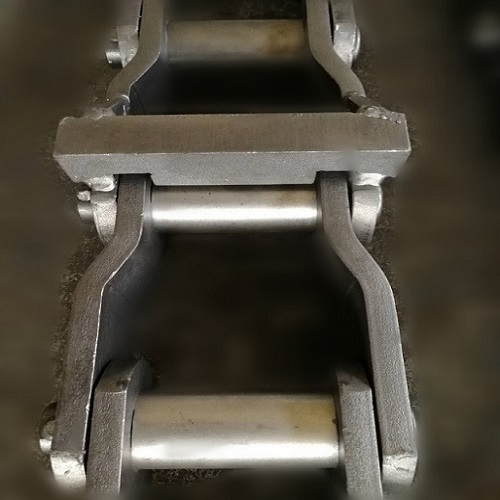
Engineering Plastic Chain
Mainly made of materials such as nylon and POM, it is lightweight and chemically corrosion-resistant, suitable for low-noise scenarios such as electronic assembly and packaging. However, it is necessary to avoid high temperatures and abrasion from sharp materials.
Classification by Structural Design and Function: Adapting to Complex Conveying Needs
With scrapers fixed on both sides of the chain, it is used for the horizontal or inclined transportation of powdery and granular materials, such as in the processing of grain and the transportation of chemical raw materials. The design needs to consider the matching of the scraper spacing with the material fluidity.
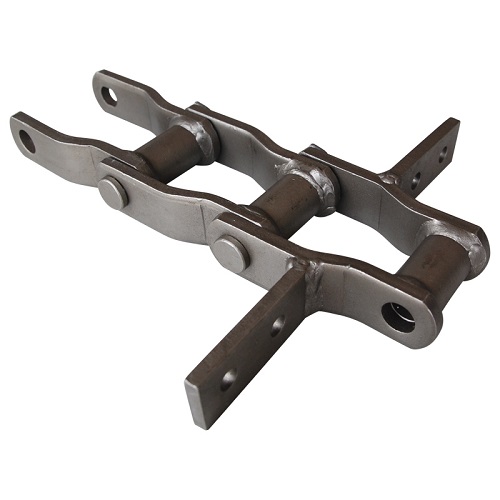
Side Flexing Chains
The chain links can bend laterally by 30° - 180°, adapting to the curved paths in beverage filling lines and cosmetic production, avoiding the jamming problem of traditional chains at bends.
It adopts a thickened chain plate and roller structure, such as models 81X and 3939. Designed specifically for the wood processing and paper-making industries, it has high impact resistance and the ability to prevent wood chips from getting stuck. The surfaces of some chains are galvanized or nickel-plated to resist humid environments.
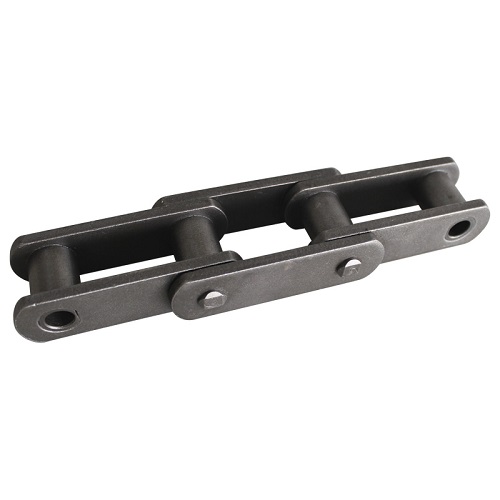
The misaligned link design reduces operating resistance and is suitable for long-distance conveying systems, such as in port logistics or coal transportation, which can reduce energy consumption by 15% - 20%.
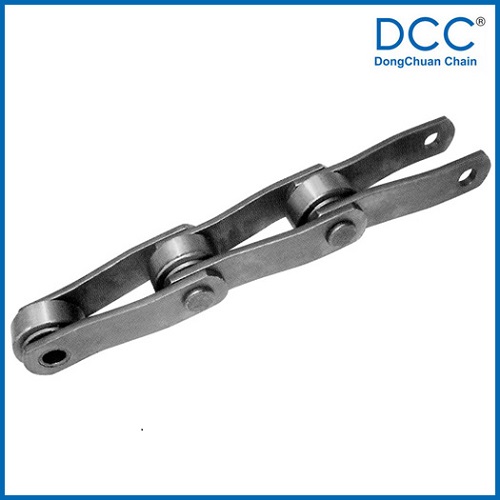
Classification by Special Application Scenarios: Solving Industry-Specific Pain Points
Designed for soil excavation machinery, the chain links are are integrated with high-strength alloy blades and can endure severe wear from hard soil or rocks. Certain models are carburized, yielding surface hardness exceeding HRC60.

Chain Resistant to High Temperature
Adding elements like molybdenum and tungsten increases heat resistance. Its thermal expansion coefficient is low, and can work stably in working conditions such as above 500°C in foundry and glass industry.
Anti-Static Chain
In explosive/chemical environments and dust, accumulation of static electricity is eliminated by means of conductive coatings or carbon fiber composites to reduce the risk of explosion.
Classification by International Standards and Certifications: Ensuring Compatibility and Reliability
ISO Standard Chain
Such as the ISO 1977 series, which covers straight chains, hollow pin chains, etc., and is widely used for equipment matching in global production lines.
DIN Standard Chain
Such as the DIN 8167/8168 series, which emphasizes high precision and low tolerance and is suitable for automotive manufacturing and precision instrument assembly.
ANSI Standard Chain
Such as the ANSI B29.15 series, which focuses on heavy industry applications in the North American market, has strong compatibility and supports customized attachment expansion.
Comprehensive Selection Recommendations: Balancing Performance and Cost
Load and Speed Matching
For heavy-duty scenarios (such as the 4824 crank chain), it is necessary to choose a large pitch (over 100mm) and thickened chain plates; for high-speed scenarios (such as roller chains), it is necessary to optimize the roller diameter to reduce friction.
Environmental Adaptability
In humid environments, stainless steel or galvanized chains are preferred; for corrosive media, plastic or nickel-plated chains can be selected.
Maintenance Cost Control
Maintenance-free chains use self-lubricating bearings or sealing designs and are suitable for continuous production lines; modular chains (such as side flexing chains) support the rapid replacement of damaged units, reducing downtime losses.
Summary
How many types of conveyor chains are there? The answer encompasses dozens of subtypes from basic materials to complex functions. Whether it's the impact-resistant design of lumber conveyor chains, the material adaptability of scraper chains, or the extreme load capacity of heavy-duty crank chains, each type of chain provides a customized solution for specific industrial scenarios. When making a selection, it is necessary to comprehensively evaluate load, environment, maintenance, and standard compatibility to achieve the optimal balance between efficiency and cost.







View More(Total0)Comment Lists